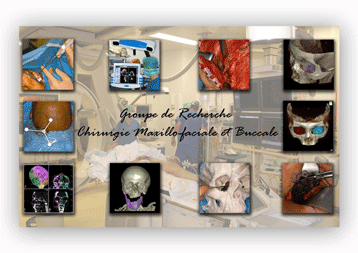[896] Maxillofacial and Oral Surgery

-
Computer-aided volume measurement of post-traumatic orbits reconstructed with non-preformed versus three-dimensionally preformed titanium mesh plates.
The purpose of this pilote study is to evaluate and compare the accuracy and reliability of non-preformed titanium mesh plates (NPMP) versus three-dimensionally preformed titanium mesh plates (PMP) in posttraumatic orbital volume reconstruction by using a computer-aided volumetric measurement of the bony orbits. Bony orbital volume is measured from coronal CT-scan slices using OsiriX Medical Image software. After defining the volumetric limits of the orbit, the segmentation of the bony orbital region of interest (ROI) of each single slice is then performed. At the end of the segmentation process, all of the ROIs were grouped and the volume computed. The same procedure is performed on both orbits and thereafter the volume of the contralateral uninjured orbit is used as a control for comparison. The volume difference between the two groups and between the reconstructed versus uninjured side in both groups will be statistically correlated. -
Computational ''bone mirroring'' planning and navigation guidance in primary and secondary treatment of orbito-zygomatic fractures.
The purpose of the present study is to prospectively evaluate the use of a new approach including the use of a ''mirroring'' computational planning, a navigation guidance system and an intra-operative CT scan in predicting and immediately confirming the restoration of facial symmetry in primary and secondary treatment of midfacial fractures. A pre-operative 1 mm slice-thickness axial CT scan is obtained for all the patients. The specific planning software (iPlan CMF 2.6 BrainLAB) is used to generate and mirror the contra lateral uninjured orbito-zygomatic complex to the affected side. This computed superposition is integrated in 2 and 3D into the original CT scans resulting in an ideal and symmetrical positioning of the bones. The intra-operative patient's registration is performed by laser surface scanning and the matching between the planned and the actual position of the reduced bone is verified by means of wireless passive pointers. The fractures are then fixed according to the planned position with titanium plates. Finally, the predicted and definitive bone positions are compared by superimposing the computational simulation tracing on the immediate post-operative CT scan images. -
Comparison of simultaneous imaging with PET/CT, MRI and CT for chronic osteomyelitis in a rat model.
The purpose of the present study is to investigate the sensibility and specificity of PET/CT, MRI and CT in induced chronic osteomyelitis at different stages. Imaging and histology are correlated during induced active infection and after surgical treatment to determine the reliability of PET/CT, MRI and CT at different stages of the infection and healing.
